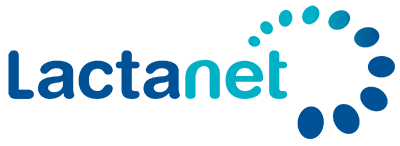


|
A Step Towards Genetic Improvement for Hoof Health 24-OCT-2016 What are the major health issues in your lactating herd? Chances are good your answer includes some or all of the following: mastitis, reproductive issues and lameness. Great strides have been made in terms of genetic selection for reduced somatic cell, improved resistance to clinical mastitis and higher daughter fertility. But when it comes to genetic improvement for hoof health, progress has been minimal. In fact, research has shown that decades of selection for feet and leg type traits have not resulted in any decrease in the frequency of hoof lesions. Fortunately, things are about to change. Starting in 2018, genetic selection for hoof health should be possible. Read about the research project that will bring us this highly sought-after selection tool. The Cost and Impact of Lameness Lameness is prevalent and expensive. It is a significant economic issue in the Canadian dairy industry. It has a negative impact on animal well-being and lameness is often easily visible compared to most other diseases. Costs associated with lameness include treatment, decreased milk production, decreased reproductive performance and increased premature culling. Combined, these factors mean a single case of lameness can cost a producer upwards of $350. Nationally, it is estimated that one-quarter of all dairy cows have at least one lesion, and while not all lesions result in lameness, they are a clear precursor. Industry recognized the need for more research in this area, particularly from a genetic standpoint. The Project: Improving Hoof Health in Canadian Dairy Herds In 2014, the four-year project called "Improving Hoof Health in Canadian Dairy Herds" began. The project is one of several that were funded within the Dairy Research Cluster 2, which includes monies from Canadian Dairy Network (CDN), Dairy Farmers of Canada, Agriculture and Agri-Food Canada and the Canadian Dairy Commission. The project is led by Dr. Filippo Miglior of CDN, who is also an Adjunct Professor at the University of Guelph. Other key contributors include the Project Manager, Anne-Marie Christen of Valacta, and Research Associate, Dr. Francesca Malchiodi of the University of Guelph. The project has four major objectives including: 1. Standardization of hoof lesion data collected by hoof trimmers across Canada Objectives one and two are completed, while three and four remain in progress. Standardization of hoof health data has been achieved by collecting data from hoof trimmers equipped with Hoof Supervisor software. This tablet-based program, used by certain hoof trimmers, specifies the type, severity, claw and zone for each lesion. An interface between Canadian DHI and the Hoof Supervisor System has been developed, which allows trimmers to download some DHI information (cow identification, days in milk, dates of calving, breeding and pregnancy, etc.) directly into Hoof Supervisor prior to a herd visit. This enables herd and animal identification data to be attached to the Hoof Supervisor records. Following herd visits, trimmers routinely transfer Hoof Supervisor data (lesions, severity, actions) back to Canadian DHI, which then sends the data to CDN. There are presently 28 hoof trimmers contributing data in this manner and another group of 8 to 10 trimmers are expected to start shortly. The current focus of the project is the development of a new DHI herd management report for hoof health. A small working group of hoof trimmers, veterinarians, producers and a dairy advisor are working together to create this report, which will allow herds to benchmark themselves against other herds provincially and nationally for major economic hoof lesions. Preliminary Results Figure 1 shows results from herds involved in provincial hoof health projects in Alberta, British Columbia and Ontario between 2009 and 2012. Results indicate that digital dermatitis is clearly the most important hoof health issue to be addressed with an estimated average incidence of nearly 15% among all cows. Three other hoof lesions, namely sole ulcer, white line disease and sole hemorrhage also affect the herd profitability, with average incidence rates approaching 5% of all cows, and would therefore benefit from genetic selection and herd management information available to producers.
Heritabilities for hoof lesion traits are low and range from 1% to 7%. However, there is enough variability between bulls to select them for enhanced resistance to hoof lesions. Initial work has been done on calculating genetic evaluations for hoof health traits. As an example, Figure 2 compares Sire Relative Breeding Values (RBV) for digital dermatitis to the percentage of healthy daughters. When ranked genetically, the top 10% of sires have less than 7% of their daughters with digital dermatitis while, on the other hand, the bottom 10% of sires have over 24% daughters with digital dermatitis.
A genome-wide association study has also been performed for digital dermatitis and sole ulcers. Results indicate the presence of certain genes that have significant effects on these hoof lesions, which is promising for selection of increased resistance. Another major benefit of centralizing hoof health data at CDN for genetic and genomic evaluations is the fact that DHI will also have information of hoof lesions to help producers improve their herd management and to advance the research on risk factors associated with hoof lesions. Next Steps The next major part of the project involves the development of a genomic evaluation system for hoof health. This system may use methodology called "single-step", whereby genotyped cows from herds with hoof health data serve as the reference population as opposed to progeny proven sires. Canadian hoof trimmers and Canadian DHI have been essential to successful data collection so far. Nevertheless, more hoof trimmer participation is needed in order to sustain evaluations for hoof health beyond the project. The goal is to have routine hoof health records from 10-20% of cows in herds across Canada. With this quantity of data, selection for hoof health will be possible well into the future. Authors:
|